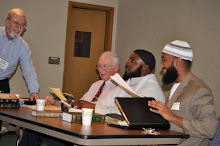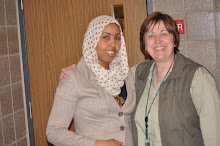Create CommUNITY sets focus areas
Group seeks funds to help minorities
By Charles Pulliam • cpulliam@stcloudtimes.com • August 7, 2008
Read Comments(152)Recommend (1)Print this page E-mail this article
Share this article: Del.icio.us Facebook Digg Reddit Newsvine What’s this?
A new business plan is in motion for St. Cloud-based Create CommUNITY, a five-year-old organization founded to respond to increasing diversity in Central Minnesota.
Create CommUNITY has set three focus areas for the next three years with the help of ClearPath LLC of St. Cloud.
But to meet its goals, it needs money — $2.1 million.
“In order to continue what we do, that’s the amount of money we need,” Create CommUNITY coordinator Hedy Tripp said. “We are hoping a number of businesses will fund us ... even if it is small, it all helps.”
The sum was computed after months of meetings, discussions and ongoing conversations by the Create CommUNITY steering committee, she said.
For the next three years, the organization will focus on housing and health care access for people of color and educational improvement.
The plan is aimed at strengthening the community by dismantling racism.
“Those were the three focus areas that everything basically falls in, not saying other areas aren’t as important, but we have limited resources and want to do as much as we can,” Tripp said.
The organization used $110,000 in grants to community projects to work on closing racial gaps in the past year.
A recent $40,000 grant to the Minnesota International Health Volunteers launched a Community Health Worker Program and allowed the hiring of a Somali staff person to work directly with the Somali community.
“If we have this money, this is what we do,” Tripp said, adding that patient satisfaction for Somalis has improved with the addition of the new staffer.
Recent figures
Minorities make up about 12 percent of St. Cloud’s population, but 97 percent of area homes are owned by white people, according to a community analysis by Upfront Consulting in St. Cloud. Racial discrimination may play a role: The St. Cloud Human Rights Office confirmed 37 cases of housing discrimination in 2006.
The Upfront analysis also found that minorities are underserved in the health care system.
The research revealed that basic health care for people of color in the area is hindered by the lack of insurance.
Less than 6 percent of white Minnesotans are uninsured, compared with 34 percent of Hispanics, 21 percent of American Indians, 13 percent of African-Americans and 10 percent of Asian-Americans, according to Create CommUNITY’s research.
In the classroom, students of color are not only less likely to graduate from high school and pursue higher education, but they are falling further behind in math and reading achievement.
On the 2005-06 Minnesota Comprehensive Achievement tests, 49 percent of black eighth-graders met the state’s standards for reading, compared with 67 percent for white students.
In math, the number for black students who met the standards dipped to 20 percent, compared with 58 percent for white students.
White students also held a 93 percent graduation rate from high school, while 63 percent of black students graduated.
Funding breakdown
If the goal of raising $2.1 million is met, Create CommUNITY’s blueprint for using the funds includes allotting $719,000 to build awareness and support professional training, community education and increased marketing for Create CommUNITY and other initiatives.
To combat housing discrimination, Create CommUNITY plans to use $301,000.
A partnership with Tri-County Action Programs is arranged to create seminars directed toward communities of color, which includes rental meetings in native languages when appropriate.
Other goals include the development and administration of a third-party housing discrimination test, which would be conducted randomly until signs of discrimination are eliminated.
Create CommUNITY wants to appropriate $468,000 to expand the local Community Health Worker Program and $116,000 to support projects that would help improve academic performance for minority students.
The $2.1 million figure also includes operation costs to coordinate efforts and measure results, estimated at $298,000 over the next three years, while $225,000 in grants is needed to continue to boost the three target areas.
“Our journey isn’t going to be easy, but we have to open our minds to our differences,” Tripp said. “This is our plan, and this is what we want to do.”
In your voice
Read reactions to this story
Subscribe to:
Post Comments (Atom)


















































No comments:
Post a Comment